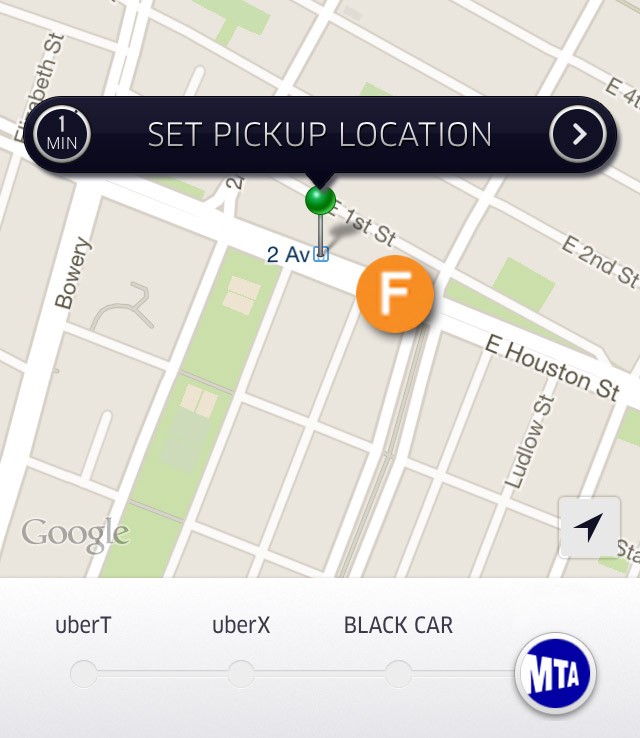How to Fix the New York Subway: Some Alternative Proposals

Subway fares are set to rise again, right on schedule (both literally and according to the grand theme of decline):
One proposal would raise the base fare for subways and buses by 25 cents to $2.75, while increasing the bonus on pay-per-ride MetroCards to 11 percent from 5 percent. A second proposal would keep the base fare at $2.50, but reduce the current pay-per-ride bonus.
These proposals only concern pay-as-you-ride customers — weekly and monthly rates will go up either way. (Weekly unlimited passes are currently $30 and monthlies are $112, and the MTA’s proposed system-wide four-percent hike applies directly, so they will end up at $31.00 and $116.50, rounded slightly down and slightly up, respectively.)
Setting aside that any price increases at all in a working public transit system are inherently regressive, increases to the weekly and monthly passes are generally more progressive, though not uniformly — there are plenty of people who need to ride the subway more than twice a day, for whom an unlimited card is an extremely high and necessary cost, and one not subsidized by work. Increases to per-ride costs, either direct or through a decrease in MetroCard refill bonuses, are generally regressive, though again, not uniformly — there are plenty of people for whom an unlimited card is a manageable but unnecessary expense, because they’re able to take cars much of the time.
This means that both proposals are effectively extra-regressive. Neither one suggests increasing the unlimited fees at a higher rate than per-ride fees: The first one increases the ride fare by eleven percent and then increases bonuses by six percent, resulting in an overall price increase of five percent, which means that the increase in cost would actually be slightly higher for per-ride customers than for unlimited customers. The second plan’s details — how much the bonus would need to be slashed — are still mystery. A bonus reduction to zero, however, would work out to a five-percent increase in per-ride cost.
So how do you structure a progressive pricing structure from where we stand now? Some ideas.
— THE ME TIER: A special MTA app, modeled after Uber, that presents subway data in a more rider-centric way. With this software, riders can “call” subways and buses, which will appear on a small map, giving Uber-seasoned riders an illusion of dominion over the entire city, including its public transit infrastructure and its employees (who will in fact be going about their business as usual). In the event that it doesn’t seem to work, or the wait is too long, or the trains aren’t going the right way, no matter: customers will switch back to the Uber app, which will satisfy them. But when the placebo effect works, imagine the feeling of POWER. Tagline: Everyone’s private conductor. Incorporate an alternative ride payment system into the app, linked to a credit card. Since this app’s users will mostly be Uber users, they will be fairly affluent. Charge whatever you want, surge price, who cares: It’s not real money, it’s app money. (Related: On-demand placebo apps represent a huge untapped opportunity. Uber for weather, Uber for birthdays, Uber for feeling like impulses have been satisfied. Call me, Marc Andreessen!)
— THE DEBT TIER: Replace the EasyPay Xpress service, which automatically pays your MetroCard from a credit card, with a credit-checked MTA account with extraordinarily high requirements and punitive interest/overdraft rates. In high-pressure platform situations — late for work, drunk and tired, shivering cold — account holders with insufficient balances would be incentivized to just blow through the turnstile instead of risking missing the next train trying to pull off a hasty refill. This would feel like a luxury product while barely being one; it would function as a small, lucrative predatory loan system for the city’s least vulnerable. Or just jack up the EasyPay Xpress cost more directly, or kill the bonus. Convenience costs something! Or just make paying with cash cheaper?
— THE LAZY TIER: A variation of an unrelated proposal by Alex Balk: Put the MetroCard refill stations after the turnstiles so that waiting, bored passengers, recently reminded of their low balances, will refill there. HOWEVER: Charge a fee. Budget-minded riders would avoid the booths as an obvious scam; other riders, bored without a phone signal, would absentmindedly swipe their cards. Make the interface vaguely Instagrammy. (Such kiosks could double as paid iPhone charging stations, or even Seamless drunk-ordering terminals.)
— THE FANTASY TIER: Purge the MTA and hand over board appointments to the de Blasio administration, which would undoubtedly be a enormous mess, but which would appeal to de Blasio’s idealistic side, his very softest side, and probably result in something still broken and weird but, in the end, closer to a public transportation system that exists for the purpose of public transportation.
Are some of these ideas silly? Sure. Stupid? Definitely. But who knows what horrors we’ll be considering in a few years, when the “higher than expected… real estate revenues” that kept this round of price hikes relatively low no longer apply. Gotta get ahead of the problem while we still can.
